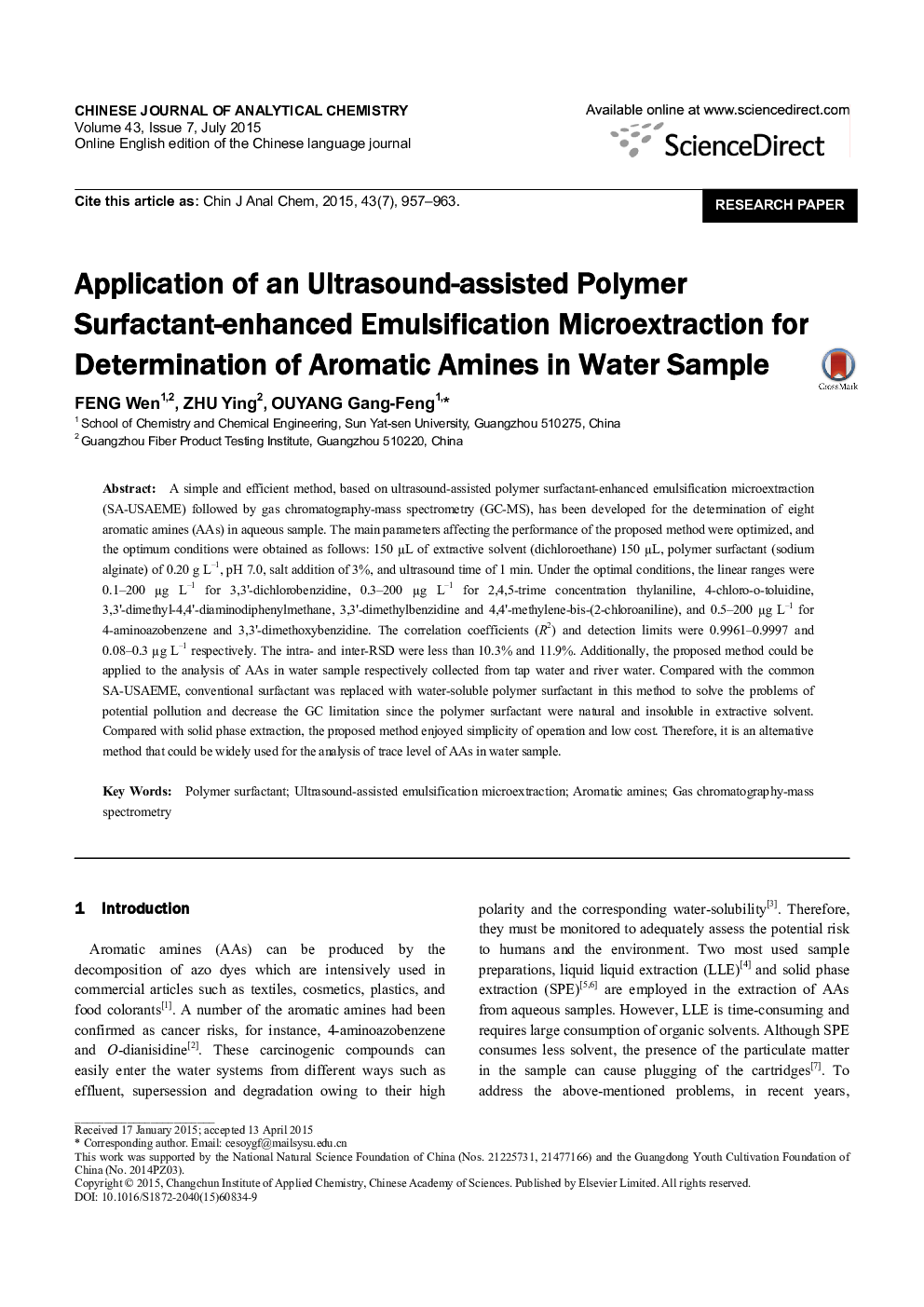| Article ID | Journal | Published Year | Pages | File Type |
|---|---|---|---|---|
| 1182460 | Chinese Journal of Analytical Chemistry | 2015 | 7 Pages |
A simple and efficient method, based on ultrasound-assisted polymer surfactant-enhanced emulsification microextraction (SA-USAEME) followed by gas chromatography-mass spectrometry (GC-MS), has been developed for the determination of eight aromatic amines (AAs) in aqueous sample. The main parameters affecting the performance of the proposed method were optimized, and the optimum conditions were obtained as follows: 150 μL of extractive solvent (dichloroethane) 150 μL, polymer surfactant (sodium alginate) of 0.20 g L−1, pH 7.0, salt addition of 3%, and ultrasound time of 1 min. Under the optimal conditions, the linear ranges were 0.1-200 μg L−1 for 3,3′-dichlorobenzidine, 0.3-200 μg L−1 for 2,4,5-trime concentration thylaniline, 4-chloro-o-toluidine, 3,3′-dimethyl-4,4′-diaminodiphenylmethane, 3,3′-dimethylbenzidine and 4,4′-methylene-bis-(2-chloroaniline), and 0.5-200 μg L−1 for 4-aminoazobenzene and 3,3′-dimethoxybenzidine. The correlation coefficients (R2) and detection limits were 0.9961-0.9997 and 0.08-0.3 μg L−1 respectively. The intra- and inter-RSD were less than 10.3% and 11.9%. Additionally, the proposed method could be applied to the analysis of AAs in water sample respectively collected from tap water and river water. Compared with the common SA-USAEME, conventional surfactant was replaced with water-soluble polymer surfactant in this method to solve the problems of potential pollution and decrease the GC limitation since the polymer surfactant were natural and insoluble in extractive solvent. Compared with solid phase extraction, the proposed method enjoyed simplicity of operation and low cost. Therefore, it is an alternative method that could be widely used for the analysis of trace level of AAs in water sample.
Graphical abstractNatural, water-soluble polymer surfactant was used as emulsifier in USAEME method to solve the problems of potential pollution and decrease the GC limitation caused by conventional surfactant. Almost a complete enchriment was achieved only by a single extraction in the proposed method.Figure optionsDownload full-size imageDownload as PowerPoint slide
